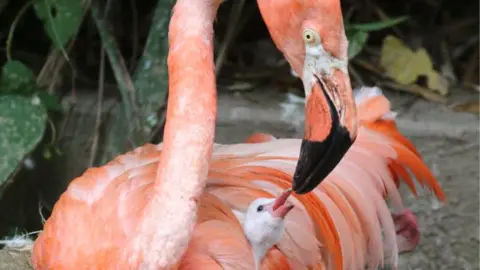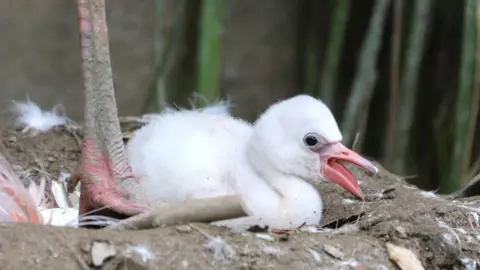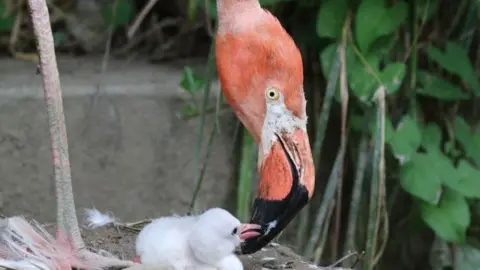Flamingo egg hatches at wildlife sanctuary
 Director Alison
Director AlisonA Caribbean flamingo egg has hatched at a Cornish wildlife sanctuary.
Curators at Paradise Park in Hayle said the chick, which hatched on Tuesday morning, was looking healthy and was under the care of its parents, who hatched another flamingo called Derek in 2019.
"It's a cute little chick," said David Woolcock, from the park.
He said the chick would soon begin to follow its parents around and then join the other flamingos at the park, including Alan, who at 37 is the park's oldest.
 Director Alison
Director AlisonMr Woolcock said: "The flamingos are right in front of the public footpath in the main lawn so it is very easy to see the female sitting and if you are lucky, you might see the chick poking out from underneath her feathers."
Despite many people assuming the chicks would be pink in colour, Mr Woolcock said the baby birds were born white with a pink beak.
He said as they get older, the white turns to a grey colour and, after two to three years, the birds start to get their "lovely and fantastic crimson, pink colour".
 Director Alison
Director AlisonMr Woolcock said: "In the wild they feed on shrimp-like creatures and that gives them the colouration, so we have to give them an artificial substitute which gives them that lovely sort of pink colour.
"If they are not a good colour and in good condition, then they won't breed so it is testament to the diet that they have this little chick now which is amazing."
Within six days the chick will begin to make its way down from the nest, which Mr Woolcock described as a "giant volcanic muddy mound".
Mr Woolcock said it had been a really good season for breeding at the wildlife sanctuary.
"I think the hot weather has got the birds triggered up for breeding," he said.
Follow BBC Cornwall on X, Facebook and Instagram. Send your story ideas to [email protected].
